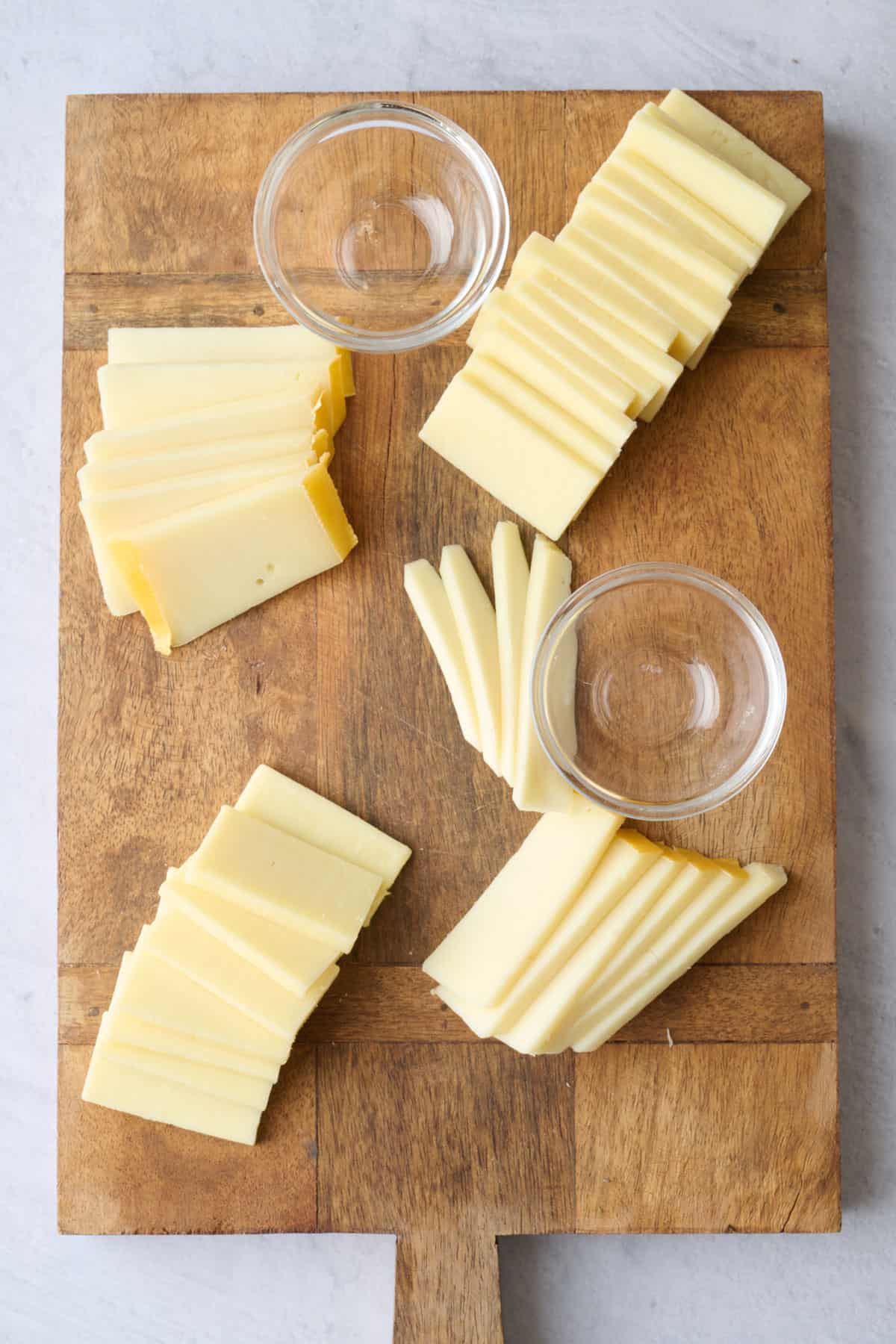Fruit and Cheese Platter
Published Nov 20, 2025
Make a fruit and cheese platter with few ingredients and my best tips! You only need 15 minutes to create a beautiful board for entertaining.
This post may contain affiliate links. Please read our disclosure policy.

Jump to Section
This Fruit and Cheese Platter post is sponsored by Crunchmaster crackers although the content represents my own personal opinion and experience using the product.
fruit and cheese platters are so easy to make!

I’ve never met a fruit and cheese platter I didn’t like. Come to think of it, I’ve never met anyone who didn’t feel the same way. Which makes it a great default appetizer option for those times when I don’t know what to bring, or just truly don’t have time to go all out. I like using a mix of Gouda and white cheddar with fresh grapes, apple slices, nuts, and some pinch bowls of fig jam or honey. And lately, I’ve been serving it all with Crunchmaster crackers, and I have a hard time keeping the board stocked with them!
Happy Cooking!
– Yumna
Fruit and Cheese Platter Ingredients

- Crackers: I like to set out a mix of seasoned crackers so there’s something for everyone. My fave are Crunchmaster crackers, they’re crisp, non-GMO, gluten-free, made with olive oil, and have a light, nutty flavor that works so well with pretty much any cheese or topping. I like to do a mix of the Sea Salt and Rosemary & Olive crackers for this holiday inspired fruit and cheese platter, but the roasted garlic or everything bagel seasoning crackers are really good too. I grab mine at Target, Fresh Thyme and Whole Foods, but you can find Crunchmaster crackers at most grocery stores.
- Cheese: I recommend using at least two types of cheese. It’s always a good idea to use something that most guests are familiar with and another that is new and exciting. It creates a great conversation piece and allows guests to try something new. My go-to combo is some sort of cheddar and some sort of gouda. Serve cheese at room temperature.
- Fruits: Look for fruits and vegetables that are seasonal or would complement the flavors you’re going for. Grapes, apples and pears (toss in lemon juice to keep from browning), peaches, oranges, strawberries, blueberries, raspberries, cherries, plums, figs and olives are all great options.
- Accompaniments: This is where you get to have fun with it and add unique items to fill the gaps between the cheese, crackers, and fruits. Think nuts, spreads, dried fruit, dips, jams, honey or even chocolate!
How to Make a Fruit and Cheese Platter





Fruit and Cheese Platter
Ingredients
- 6 ounces Gouda sliced
- 6 ounces white cheddar cheese
- 3 cups red grapes
- 1 green apple sliced
- ⅓ cup Marcona almonds
- ⅓ cup pecans
- ¼ cup fig jam
- ¼ cup honey
- 2 ounces Sea Salt Crunchmaster Crackers
- 2 ounces Rosemary and Olive Crunchmaster Crackers
- Few sprigs Fresh rosemary for garnish
Instructions
- Arrange the sliced cheese around the board keeping space between them.
- Add in small pinch bowls or dishes to be filled before serving.
- Place the fruits around the cheese and pinch bowls, layering them so they’re easy to remove from one another.
- Place the crackers around the fruits and cheese, stacking them high or fanning them out. There may be extra depending on the size of your board.
- Fill in the gaps with almonds and pecans, add jam and honey to the pinch bowls, plus any other accompaniments you'd like to add. Garnish with rosemary sprigs.
Notes
Nutrition
Nutrition information provided is an estimate. It will vary based on cooking method and specific ingredients used.
Recipe Variations
- Go for a sweet cheese board. In many cultures, cheese is served for dessert! You can skew your platter sweet by focusing on adding berries for the fruit and using a selection of dessert-friendly cheeses like brie or aged gouda, which has a caramel-like sweetness. Use cookie thins or biscotti and fill in gaps on the board with chocolate and candied nuts.
- Pick a color theme. When serving for a particular holiday, theme your platter accordingly. Think black grapes and orange peppers for Halloween or green olives and red peppers for Christmas!

Recipe Tips
- Use a flat surface as the cheese board. It doesn’t have to be an actual cheese board. You can use any platter, cutting board or even bake sheet as long as it doesn’t have curved edges. You want to be able to set items without them sliding when other items are removed.
- Serve cheese at room temperature. If you prepare the board in advance, make sure to let the cheese sit out for 30 minutes before serving.
- Prep the cheese board in advance to save time. You can prep everything a few hours in advance and just cover it with a plastic wrap. If you’re using nuts or greens though, it’s best to add those immediately before serving to preserve freshness.
- Keep the cheese board fresh by replenishing often. Keep extras of everything on the cheese board so you can easily fill the gaps as guests eat certain items. I usually know which items will be especially popular and stock up on those.
FAQs
There are varying guidelines around this, but in general 3-4 ounces per person is a good general rule. This may also depend on what other appetizers you’re serving and what other accompaniments you’re including on the cheese board.
This will come down to preference. If you’re working with a whole cheese wheel, the two preferred methods are to cut into wedges or to do pie cut. If you’re working with a rectangle or square piece of cheese, then you can slice them thinly or cut into cubes. Offering a variety of shapes and sizes will make your cheese board more visually interesting.








Comments
Can I order a premade board? Please! Thank you.
I don’t have premade boards for sale. So sorry!
Thank you!